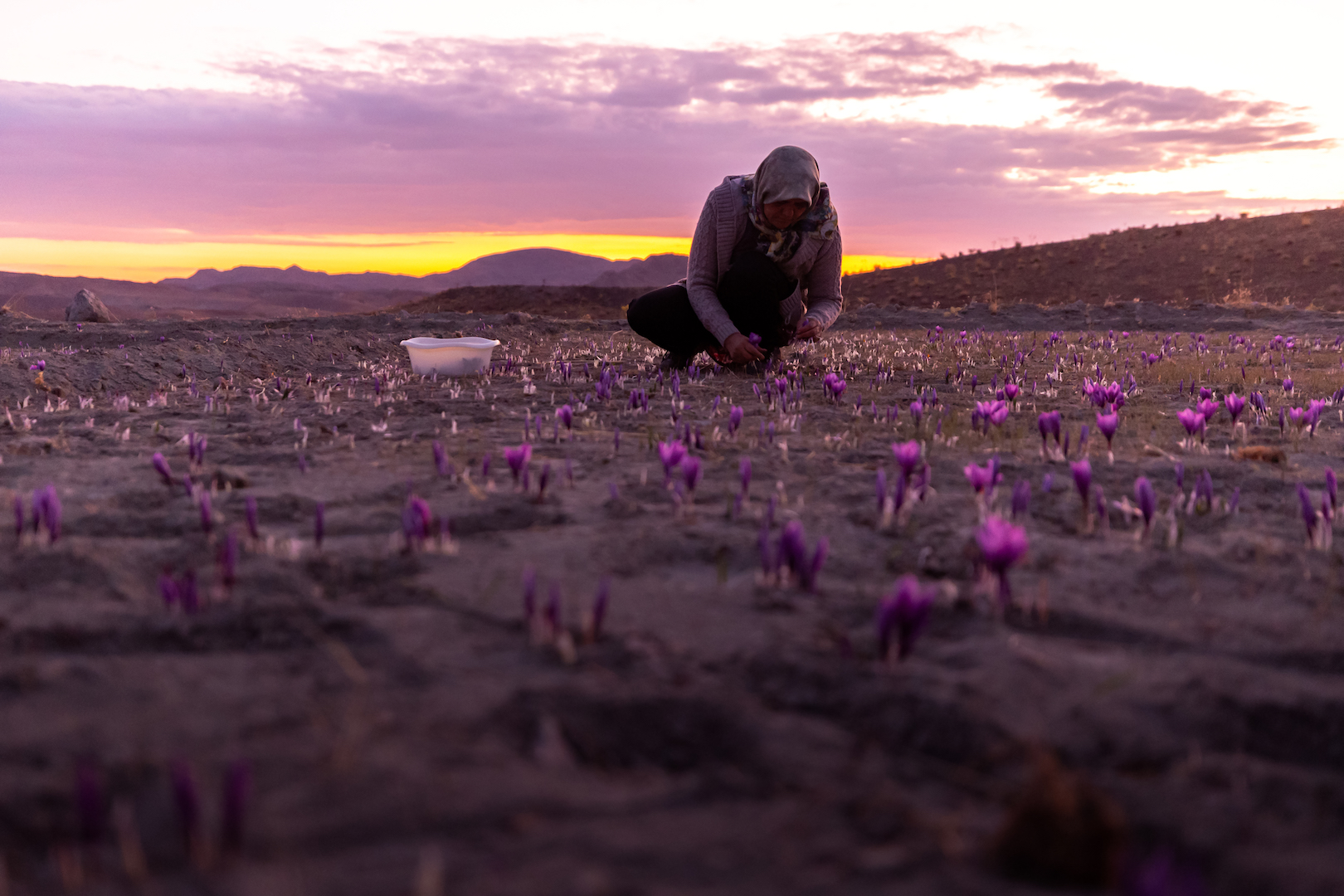The handmade scarf dyed with saffron petals
< Enter the shop to buy scarves >
In the village of Khorashad, in the province of Birjand, in Iran, the cooperative of women of Khorashad village, have saved the art of Tobafi: a very ancient Iranian textile art that was in danger of extinction. Since 2018, UNESCO has recognized this weaving art as a World Heritage. In 2003 Mrs. Fatemeh Zakerian, with tenacity and foresight, going against the indications of the majority in the country, made possible the restoration of the first machine-loom.
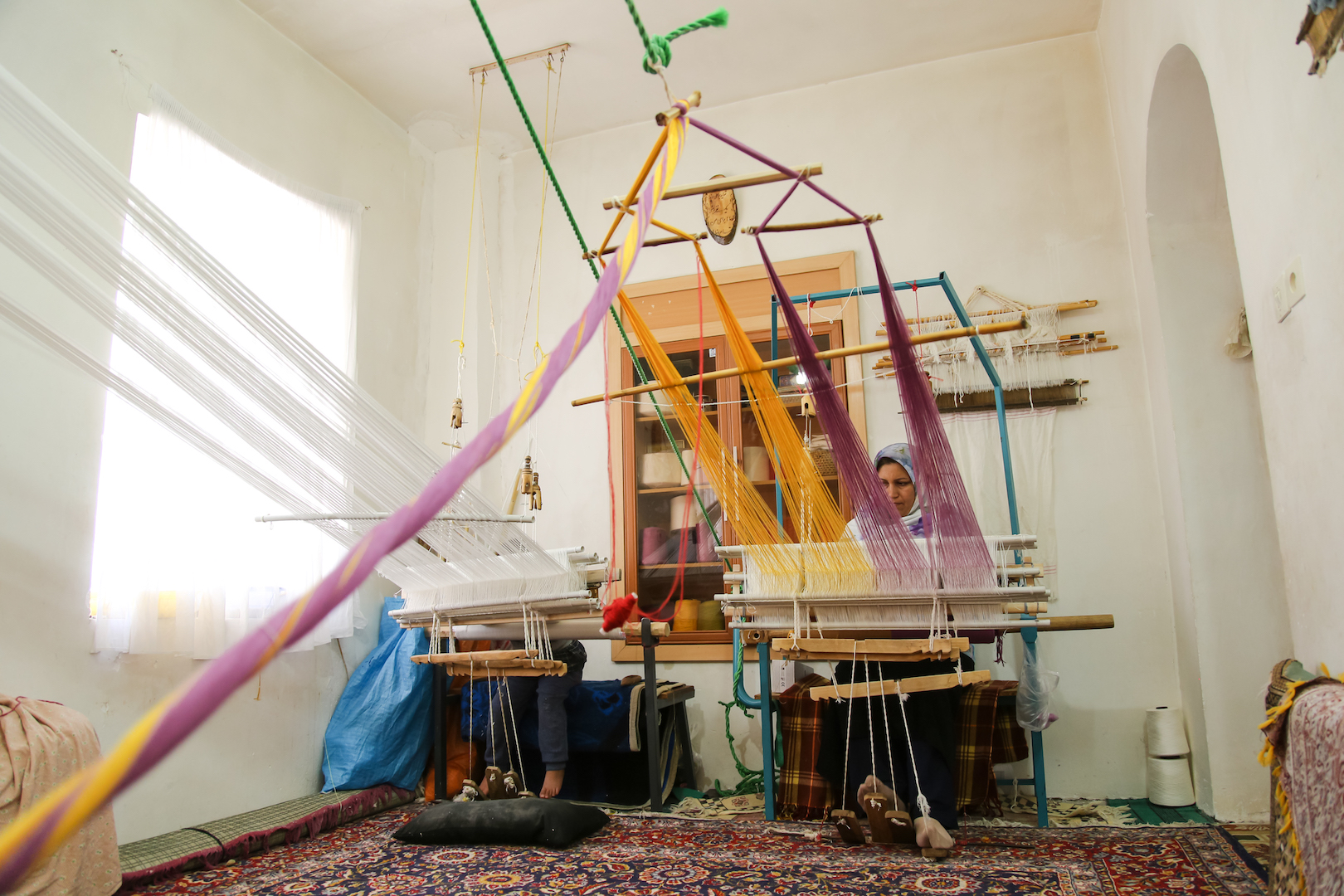
Photo 1: one of the looms recently rebuilt in the village of Khorashad
Almost everyone in the town had forgotten this ancient art of weaving, believing that with the new technologies available, hand weaving no longer made sense. Today, thanks to Mrs. Zakerian, in this village, you can hear the noise of the looms echoing from the houses, just as they once did.
Il viaggio The trip "Iran, saffron, pistachio, and Zereshk," which was organized and carried out by Shirin Persia in collaboration with the agency "Viaggi e Miraggi", passes through the women's cooperative of Khorashad.
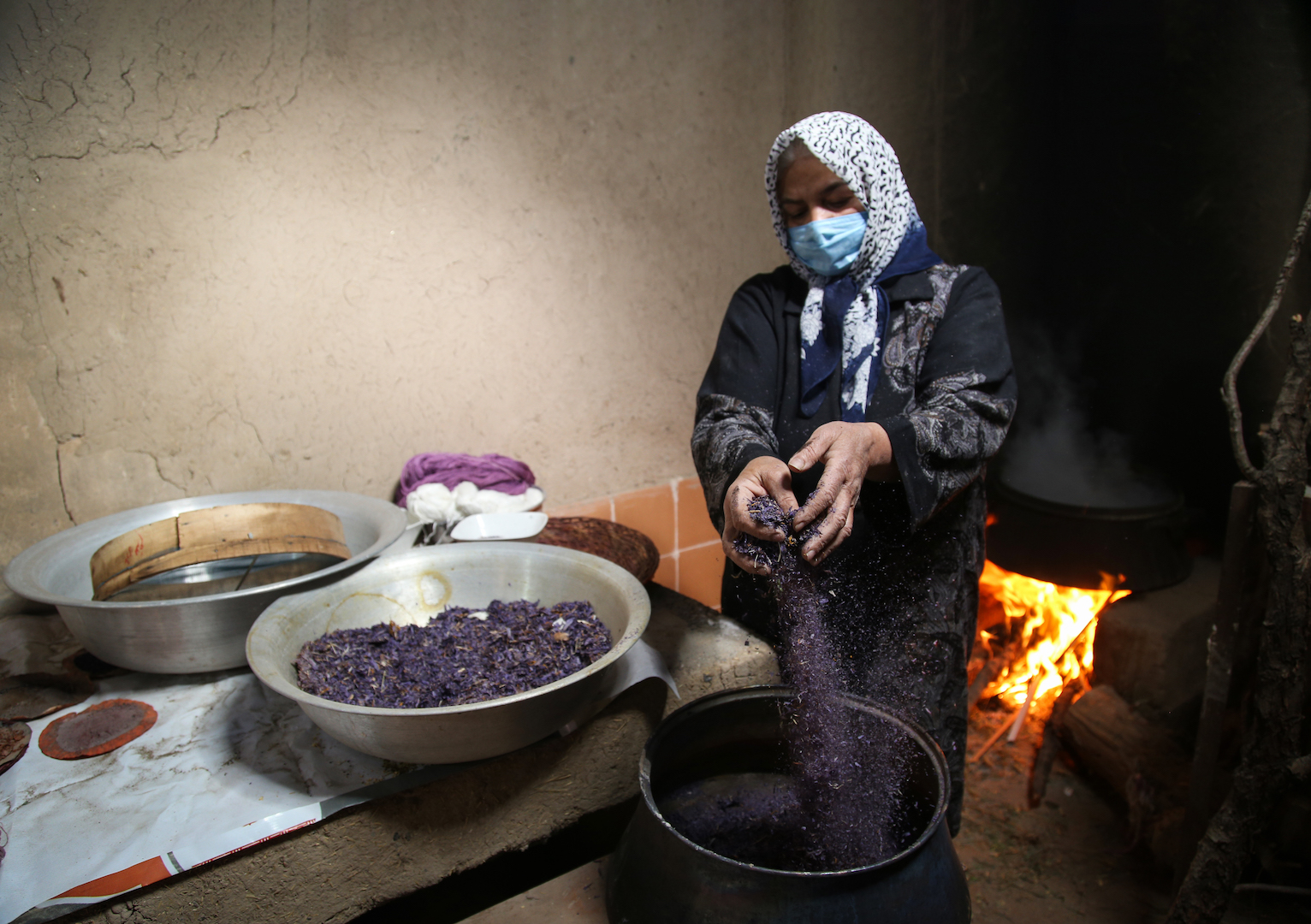
Photo 2: Preparation of the coloring mixture with the use of saffron petals
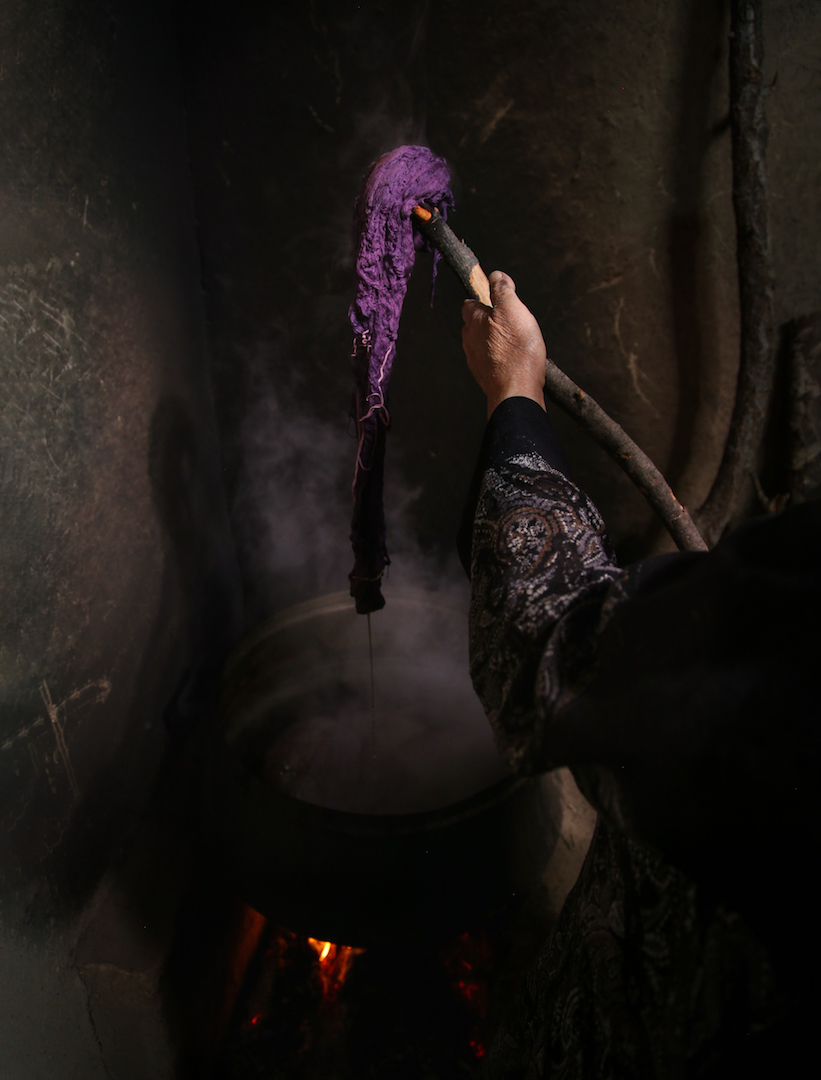
Photo 3: Immersion of the organic cotton in the natural dye mixture
Here the women will explain to visitors the techniques of hand-weaving, with different traditional designs, and how organic cotton is dyed with plant products such as flower petals, fruit peels, etc.
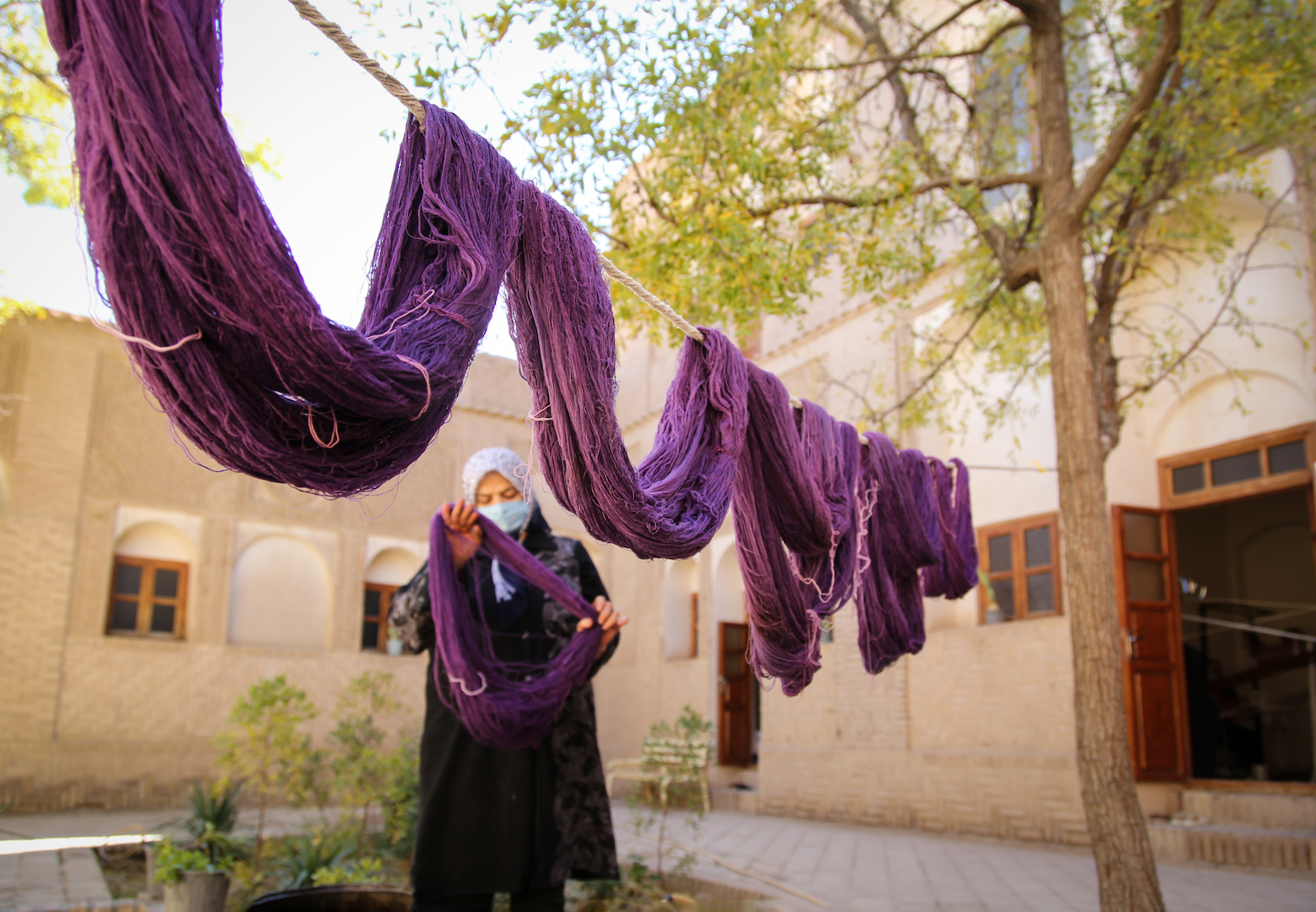
Photo 4: Colored cotton threads are hung to dry in the courtyard of the Khorashad women's cooperative
Iran, producing on average 400 tons of saffron per year, supplies 95% of the saffron produced in the world, but all the petals of the saffron flower are traditionally thrown away.
Photo 5: Harvesting of saffron flowers in Qa'en in Iran just before dawn
Shirin Persia is, for the first time, trying to enhance these petals in different handcrafted products.
The first product made with saffron petals was the decorative candle. Then, in collaboration with the women's cooperative of Khorashad, we made the bags dyed with saffron petals as a jewel case for the saffron flower necklace. Finally, we made, always with the same cooperative, the scarves dyed with saffron petals (in three models)
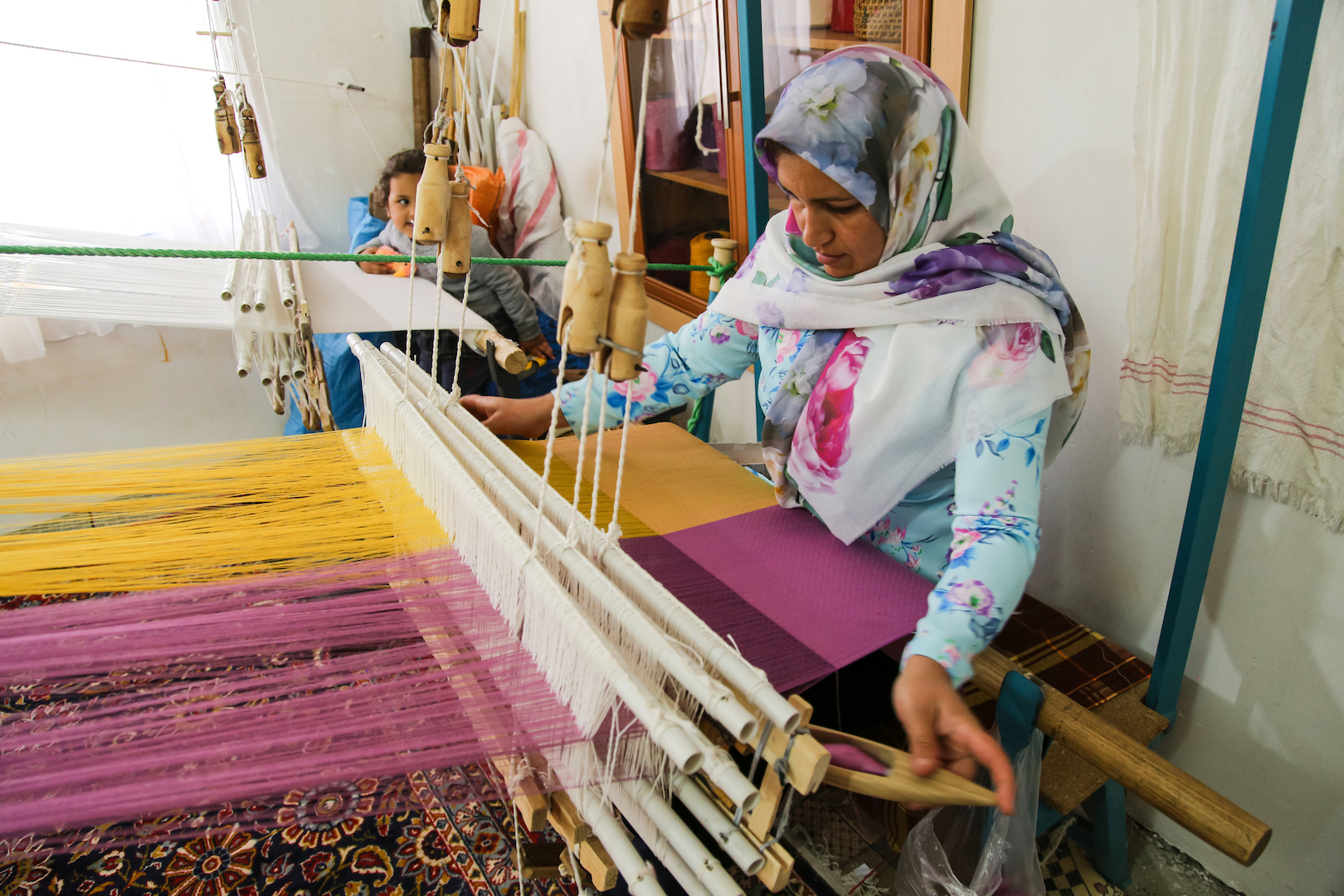
Photo 6: The work in the houses of the village of Khorashad alternates with scenes of family life
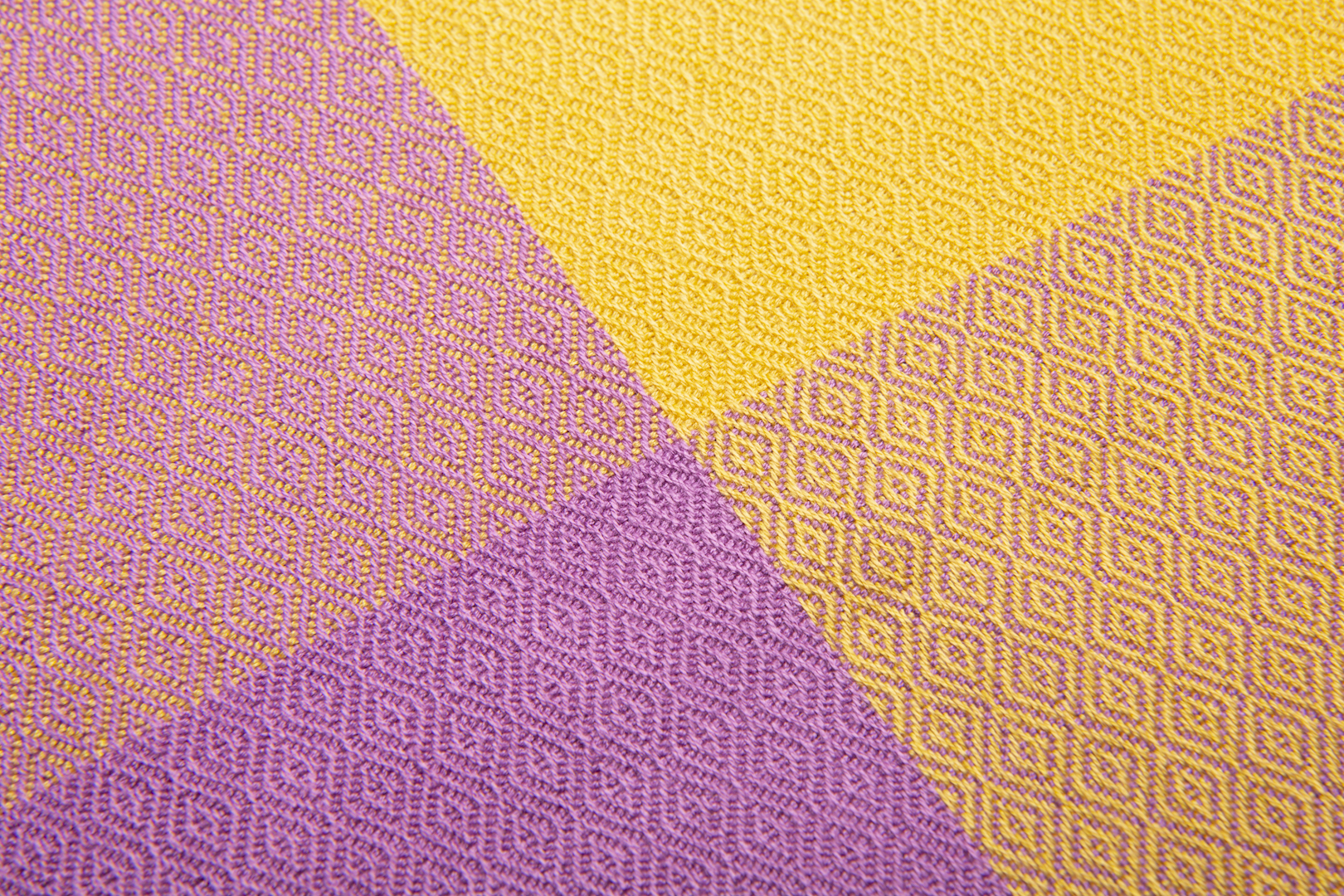
Photo 7: Close-up of the elegant weaves of the scarf fabric, you can see the play of colors skilfully obtained by the artisans
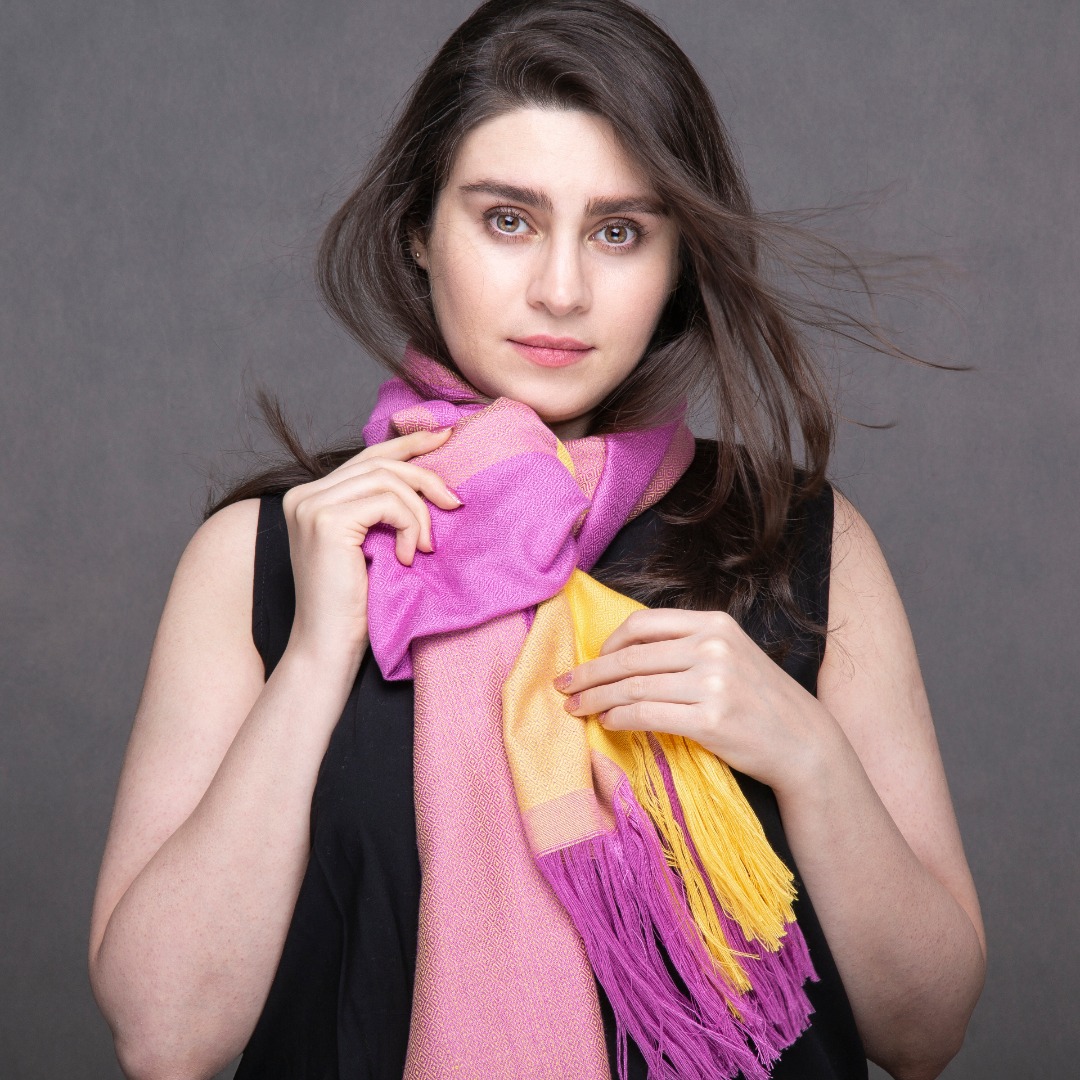
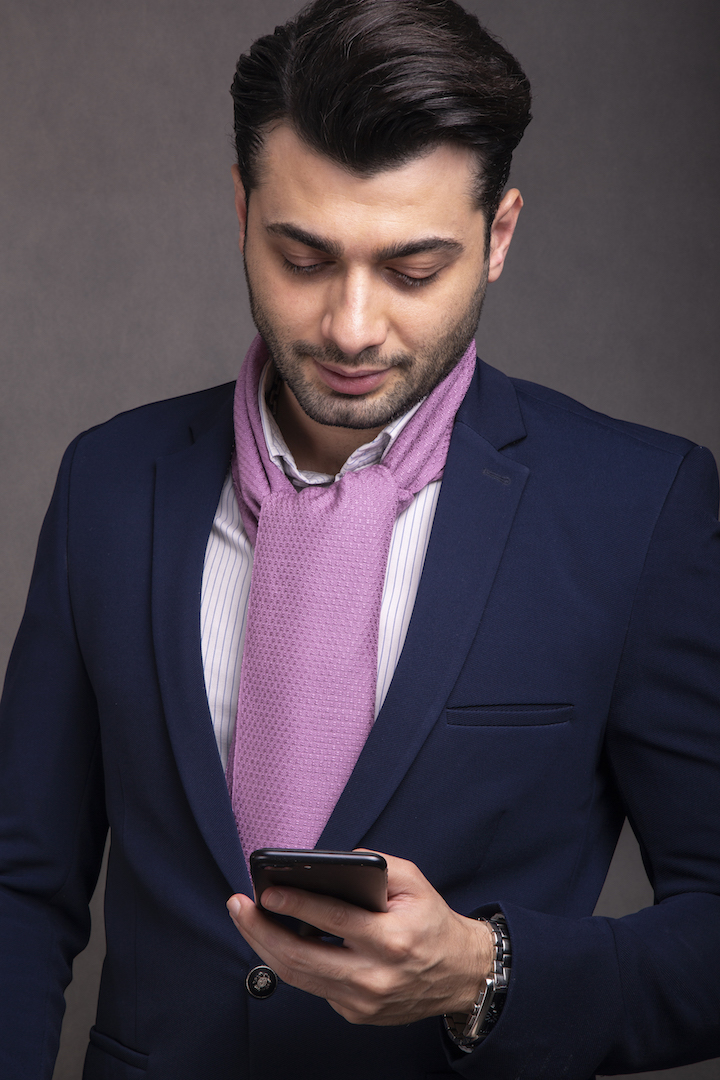
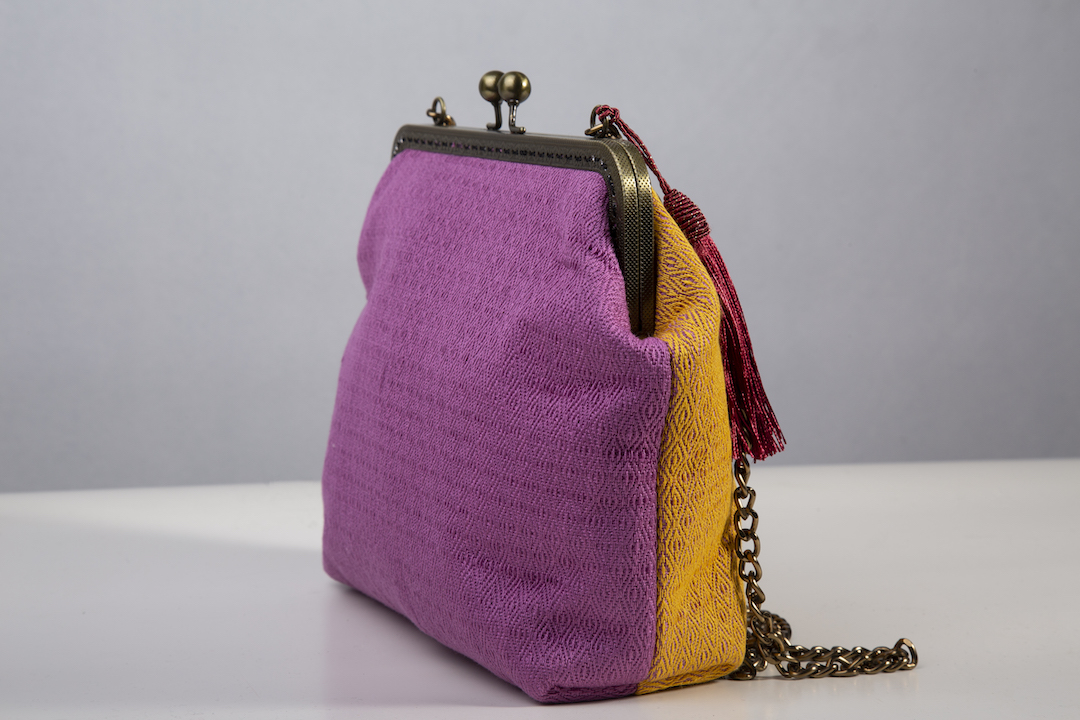
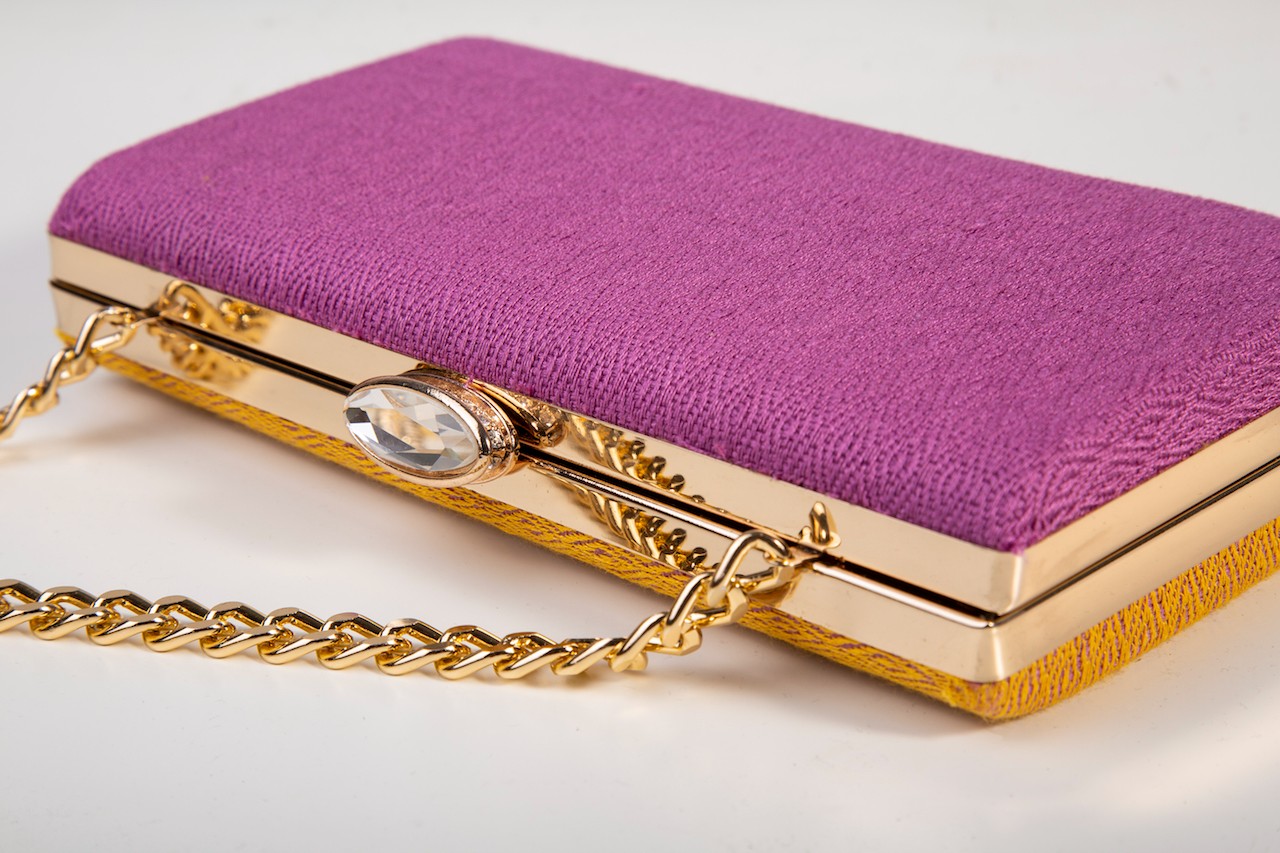
Photos 8, 9, 10, 11, and 12: The elegance of a unique product in the world
Questo prodotto è un passo significativo verso l'economia circolare ed ecologica: rappresenta una risorsa economica nuova per i contadini, realizzata a partire da uno scarto, utilizza cotone biologico ed evita l'utilizzo di coloranti chimici.
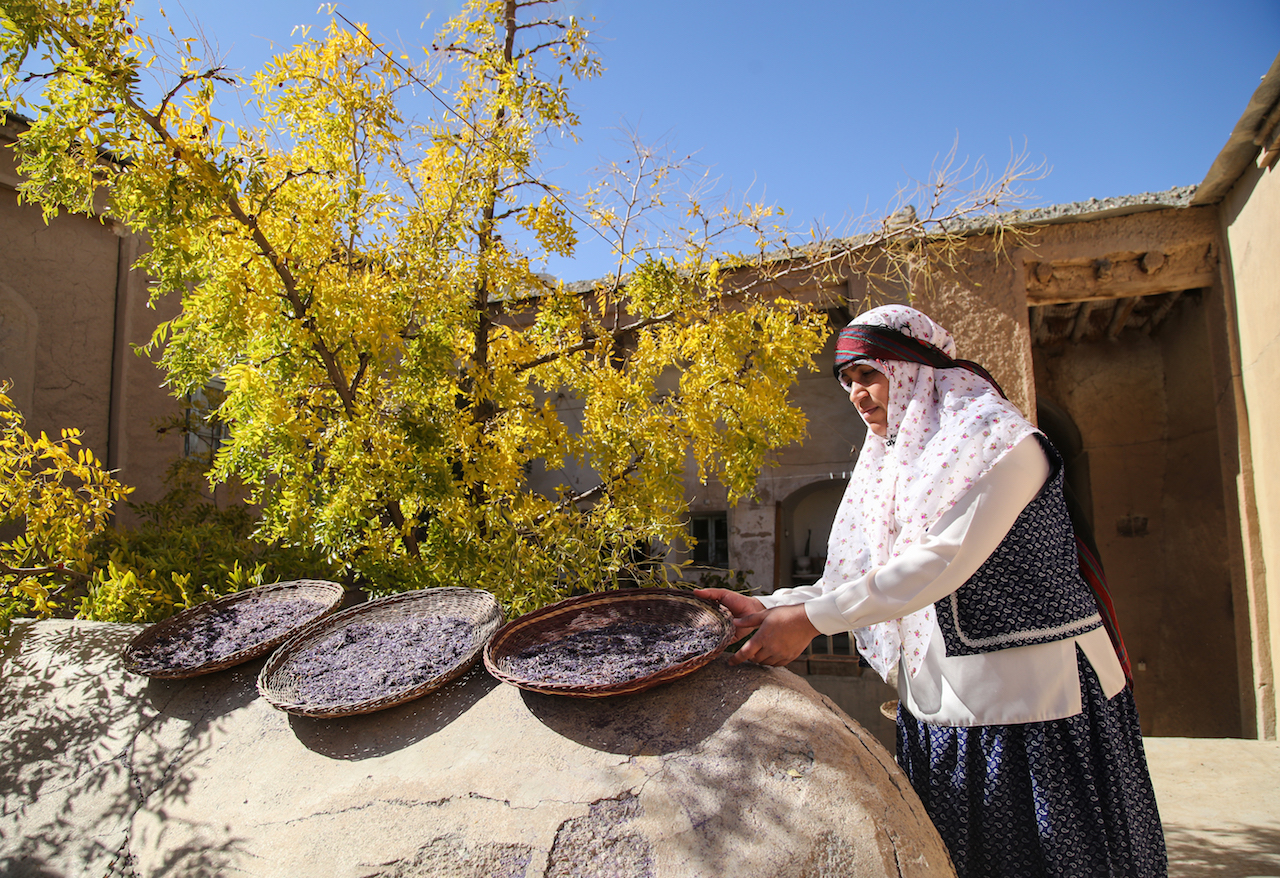
Photo 13: Saffron flower petals are dried in the sun in the courtyard of a traditional house in Khorashad
This product is a significant step towards the circular and ecological economy: it represents a new economic resource for farmers, made from waste, uses organic cotton, and avoids the use of chemical dyes.
Synthetic dyes require massive consumption of resources and produce toxic waste, often causing environmental damage that should not be underestimated.
The fashion industry is, in fact, one of the largest consumers of water in the world, and textile dyeing accounts for about 20% of the global sources of industrial water pollution. These hand-woven scarves, colored with this traditional method, are unique objects in the world that represent an essential step towards respecting people, traditions, and the environment.
< Enter the shop to buy scarves >
Photo by Iman Behdani, Alireza Azadkia and Parisa Bajelan.
